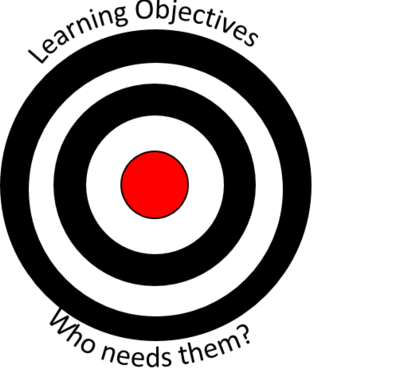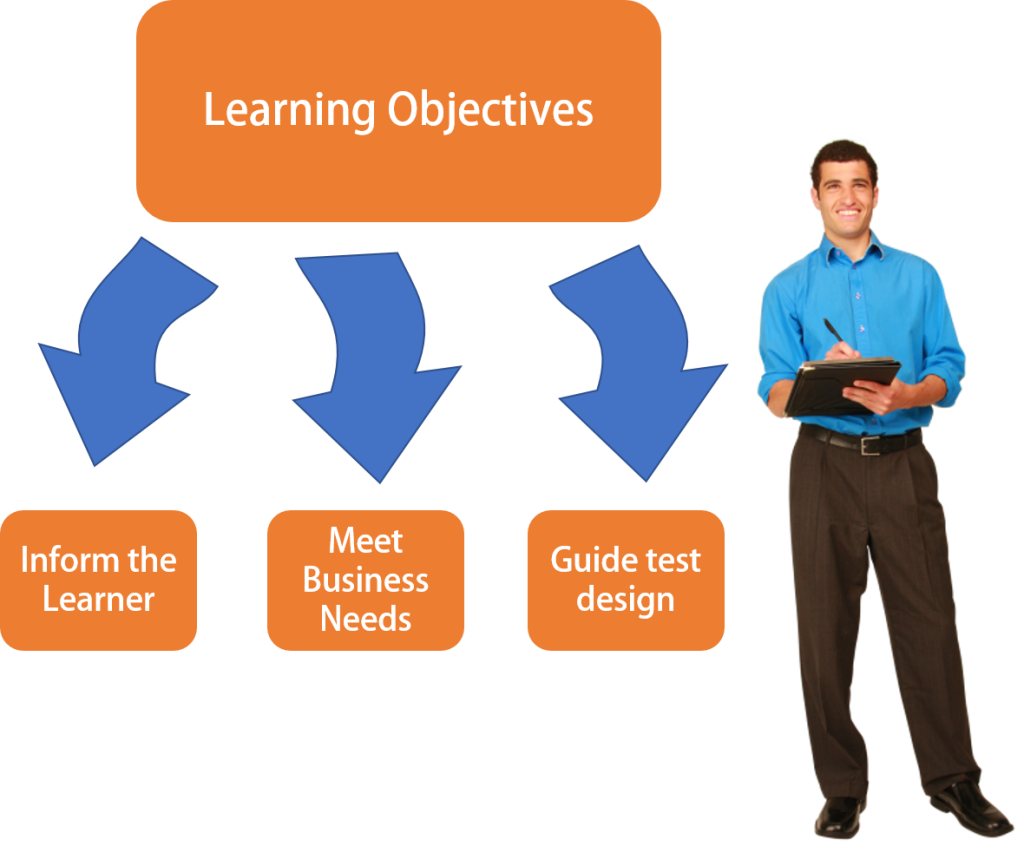Learning objectives are a critical piece of any course or learning activity involving adults. They are preliminary statements providing adult learners with clear guidance (when written effectively) about the expected outcome of their involvement in the learning activity. One can then assume that their primary purpose is to inform the learner. However, learning objectives have a much deeper strategic purpose from an instructional design perspective as well as for the evaluation of the effectiveness of a learning activity. In this post, I address the strategic value of learning objectives in training delivery and their relevance to create relevant learning experiences for adult learners.
The Instructional Design Aspect
As an instructional designer you might have studied Robert Mager's work on learning objectives and perhaps checked out Benjamin Bloom's Taxonomy to craft a masterpiece of a learning objective. That's great because these theories allow you create objectives which address the specific needs you have identified during your needs and gap analyses. Mager's theory is about behaviorism which is truly always a part of learning if you consider the learning process to be a change in behavior i.e. before instruction the learner has basic or no ability to perform a task, after instruction and application the learner is able to perform the task. Mager's framework is supported by the use of action verbs and conditional statements addressing the expected behavior, task to be achieved and level of proficiency of the same. Bloom's Taxonomy is a great reference to align your objectives with the desired level of cognition. The theory associates cognition levels with action verbs which make it easier for designers to align to the three learning domains: Affective, Cognitive and Psychomotor. The low levels of Bloom's Taxonomy are about knowledge and recall while the higher levels are about analysis, synthesis and evaluation.
Here's an example for a Knowledge level objective in a Communication course"
"List three different types of communication." This objective only requires the learner to recall three types. This objective only yields to one test question: What are the three types of communication?
Here's an example at the Evaluation level for the same course:
"Given varying physical communication barriers, select the most appropriate communication type to overcome them." This objective aligns better with more insightful test questions. It addresses not only the "What?" of learning but, also the "How" and "Why?" of it.
The Learner Perspective
If you are a learning professional and you also happen to be the learner in a given course; then you would love having instructionally-sound learning objectives. However, most learners are not and they would probably skip your learning objectives page because is just "another bullet list". We now live in a world of Do-It-Yourself (DIY) and YouTubeing (yes I just did that) learners that need to get what they need from your content and apply it at work. Below is a sample of a modified approach at expressing what the learning objectives might be aiming by adding a few images and short and job-relevant statements.
Conclusion
In summary, learning objectives are a must if your job is to design learning materials and curricula. They serve three key purposes which are to inform the learners, guide the arrangement of content and chunk information as well as provide guidance to align test questions. From the learner's perspective, learning objectives should be modified to be presented in a simplified but, still relevant manner. The traditional bulleted list of objectives may not be noticed or care for by learners. Finally, as instructional designers, we must always consider the strategic importance of learning objectives while leveraging their appeal (or lack of) to the average learner.



